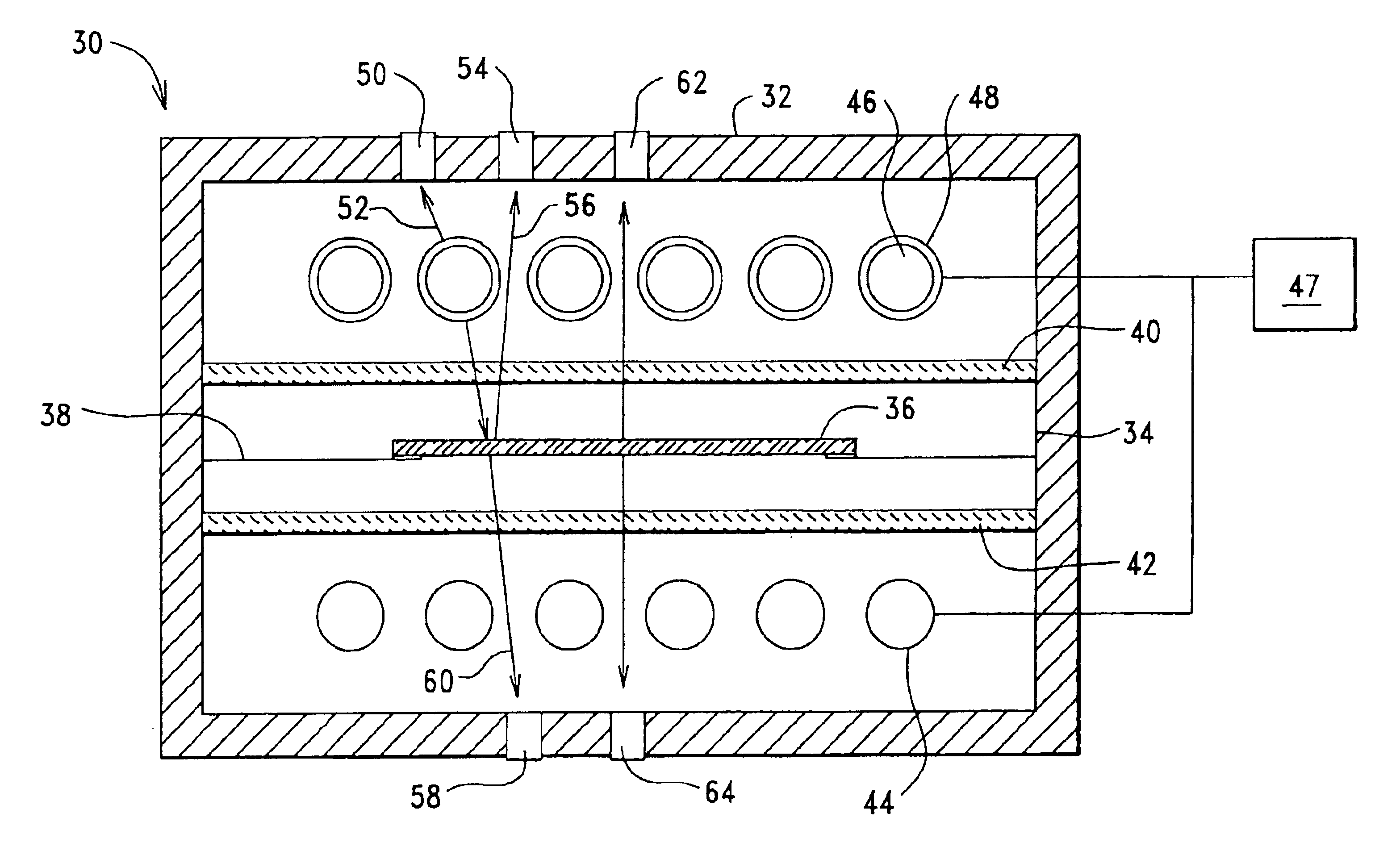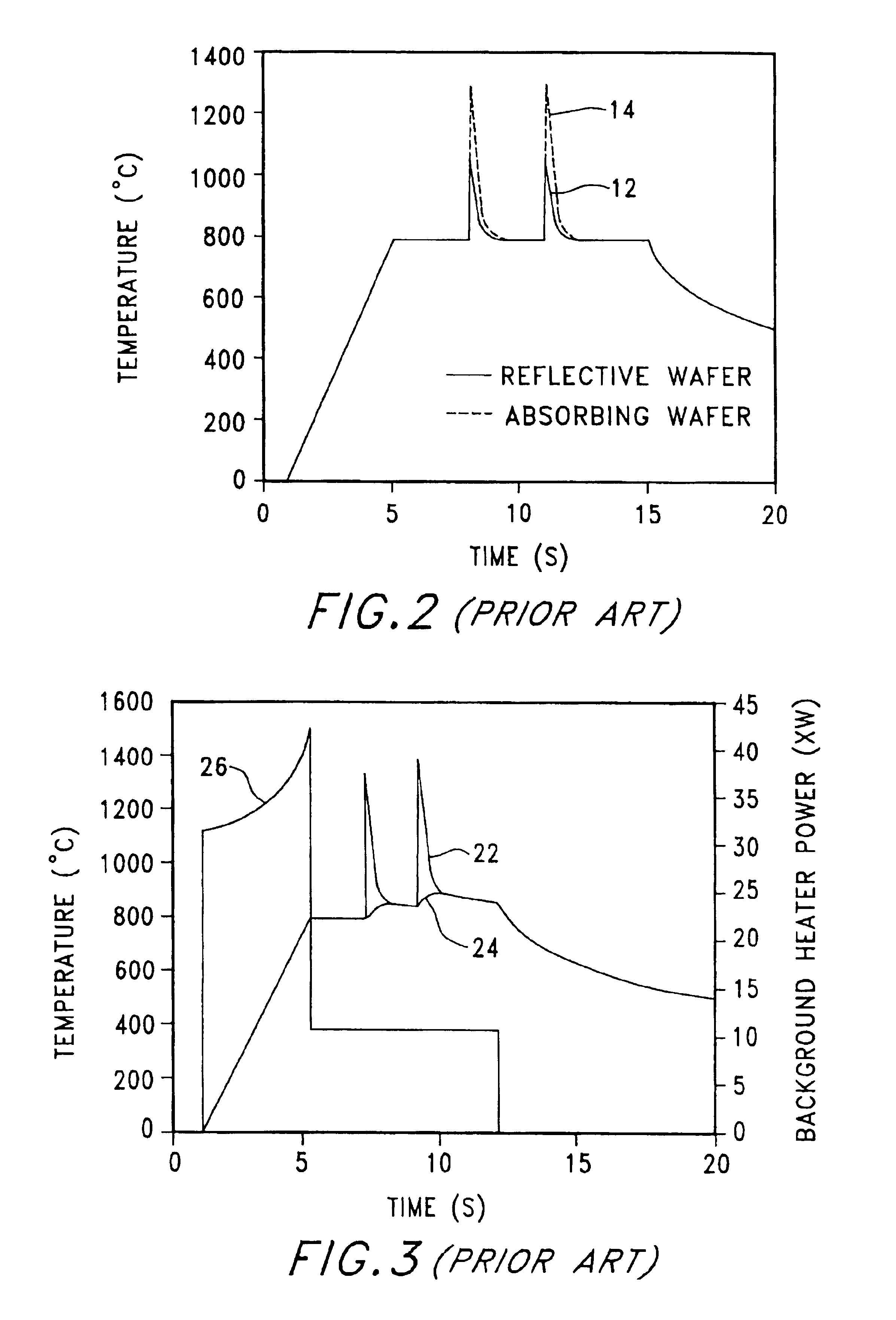Pulsed processing semiconductor heating methods using combinations of heating sources
- Summary
- Abstract
- Description
- Claims
- Application Information
AI Technical Summary
Benefits of technology
Problems solved by technology
Method used
Image
Examples
Embodiment Construction
Apparatus
[0060]Referring first to FIG. 1, a pulsed processing system 30 includes a housing 32 defining a processing chamber 34 inside which is disposed a substrate 36, such as a semiconductor wafer, held upon a support 38. Quartz windows 40, 42 isolate the substrate 36 and support 38 from heating sources 44, 46 disposed within the housing 32, and are located both above and below the substrate 36. Heat sources 44 and 46 are controlled by a computer / control arrangement 47 which is configured for selectively applying an electrical power level to each of background heating sources 44 and pulsed heating sources 46 to accomplish precise control of both sources. It is noted that control arrangement 47 is readily adaptable for controlling a multimode source in view of this overall disclosure, so as to deliver a heating profile from a single source which combines background heating behavior as well as pulse delivery. Quartz windows 40, 42 may also be water-cooled by providing one or more cha...
PUM
| Property | Measurement | Unit |
|---|---|---|
| depth | aaaaa | aaaaa |
| thickness | aaaaa | aaaaa |
| time constant | aaaaa | aaaaa |
Abstract
Description
Claims
Application Information
 Login to View More
Login to View More - R&D
- Intellectual Property
- Life Sciences
- Materials
- Tech Scout
- Unparalleled Data Quality
- Higher Quality Content
- 60% Fewer Hallucinations
Browse by: Latest US Patents, China's latest patents, Technical Efficacy Thesaurus, Application Domain, Technology Topic, Popular Technical Reports.
© 2025 PatSnap. All rights reserved.Legal|Privacy policy|Modern Slavery Act Transparency Statement|Sitemap|About US| Contact US: help@patsnap.com



